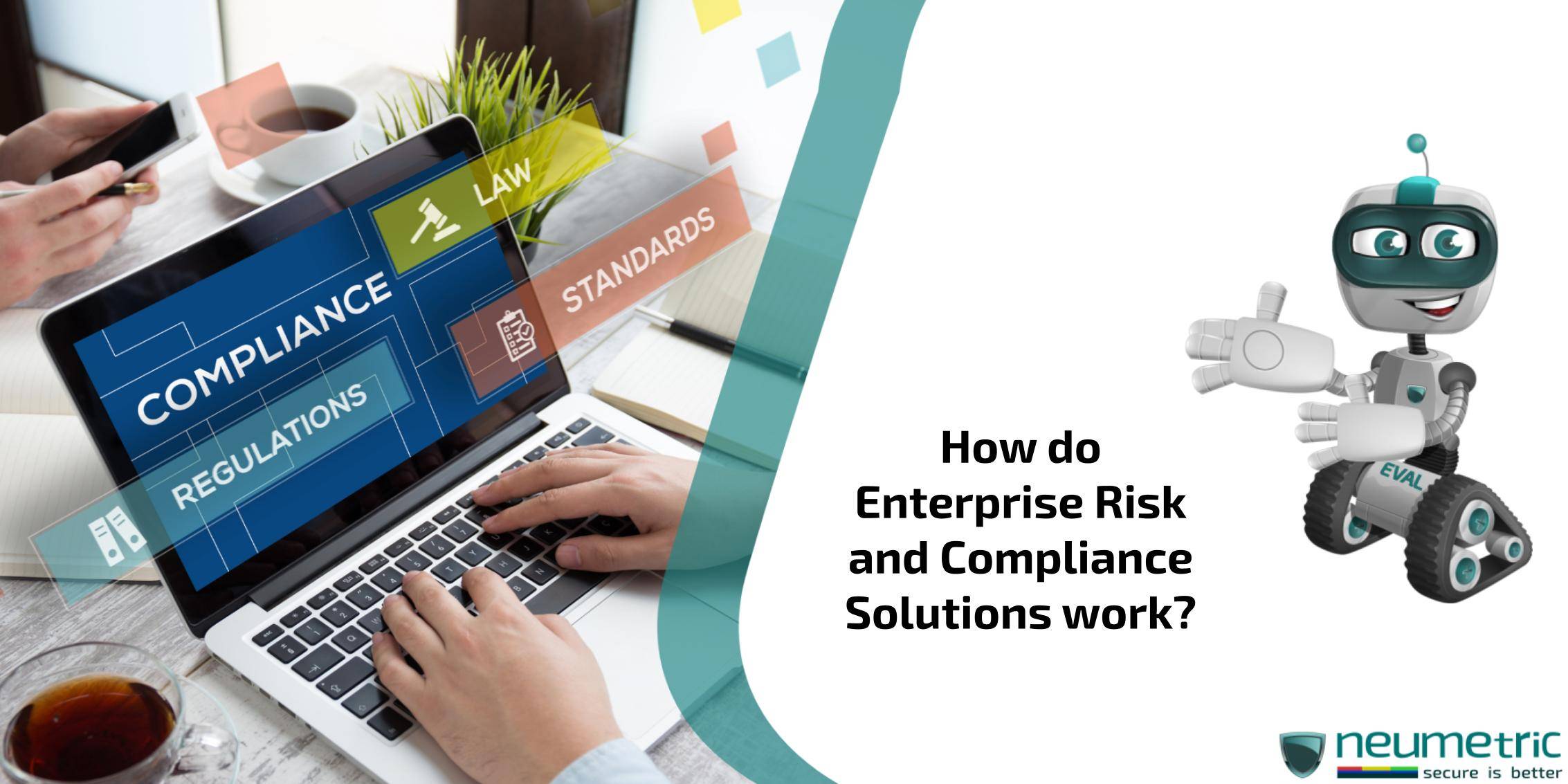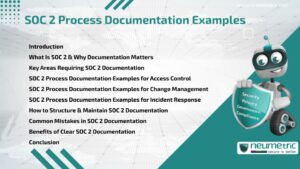Table of Contents
ToggleHow do Enterprise Risk and Compliance Solutions work?
Introduction
Enterprise Risk and Compliance Solutions [ERCS] are integrated software platforms or systems that enable firms to manage & reduce risks while adhering to regulatory standards & corporate regulations. These solutions offer a centralized framework for detecting, assessing & managing risks, as well as monitoring & enforcing compliance throughout the enterprise.
ERCS are critical in today’s business context, when firms must navigate more complicated regulatory regimes & developing risk landscapes. By deploying ERCS, businesses may proactively identify & mitigate risks, reduce compliance violations & protect their brand & financial well-being. ERCS also helps to speed compliance processes, improve operational efficiencies & improve decision-making by delivering real-time information about risk exposure & compliance status.
This Journal aims to explore the concept of Enterprise Risk and Compliance Solutions [ERCS] comprehensively. It will delve into the definition of ERCS, emphasizing its significance for businesses in managing risks & ensuring compliance. Additionally, the article will discuss the key components of ERCS & trace its evolution over time, highlighting how ERCS have evolved to meet the changing needs & challenges of modern businesses.
Understanding Enterprise Risk and Compliance Solutions
Enterprise Risk and Compliance Solutions [ERCS] are software platforms or systems that assist businesses discover, assess, manage & monitor risks while adhering to regulatory standards & corporate regulations. These solutions combine risk management & compliance tasks into a single framework, allowing firms to streamline operations, increase visibility & make educated decisions to efficiently minimize risks & maintain compliance.
ERCS are often made up of several critical components that work together to assist overall risk management & compliance objectives. These components could include risk assessment tools, compliance monitoring & reporting functions, policy & procedure management modules, incident tracking & remediation capabilities & audit & assurance features. Furthermore, ERCS frequently combines advanced analytics, data visualization & automation capabilities to improve the efficiency & efficacy of risk & compliance management.
Enterprise Risk and Compliance Solutions [ERCS] evolved as regulatory requirements became more complicated, technological developments occurred & corporate environments changed. ERCS was initially focused on compliance management, assisting firms in navigating regulatory landscapes & meeting compliance requirements. However, since the interconnection of risk & compliance has been more widely recognized, current ERCS have evolved to provide holistic risk management solutions that include risk identification, assessment, mitigation & compliance monitoring capabilities. Today, ERCS uses cutting-edge technology like Artificial Intelligence [AI], Machine Learning [ML] & predictive analytics to identify & handle emerging risks proactively, allowing firms to remain ahead of regulatory changes & market upheavals.
Risk Management in Enterprise Risk and Compliance Solutions
Risk Identification & Assessment: Risk identification & evaluation are critical components of effective risk management in Enterprise Risk and Compliance Solutions [ERCS]. These solutions equip firms with tools & processes for systematically identifying, evaluating & prioritizing risks across all parts of their operations. ERCS approaches such as risk workshops, scenario analysis & risk heat maps help firms obtain a thorough awareness of potential threats & weaknesses. By recognizing & assessing risks, companies can proactively apply mitigation techniques to lower the frequency & severity of unfavorable events.
Risk Mitigation Strategies: Enterprise Risk and Compliance Solutions [ERCS] provide a variety of risk mitigation solutions to help firms effectively address identified issues. These tactics could include risk avoidance, risk reduction, risk transfer & risk acceptance. ERCS helps organizations build & implement risk mitigation plans by offering tools for scenario modeling, risk control selection & activity tracking. ERCS helps firms improve resource allocation & reduce exposure to possible threats by aligning mitigation methods with corporate objectives & risk appetite.
Risk Monitoring & Reporting: Risk monitoring & reporting are essential functions within Enterprise Risk and Compliance Solutions [ERCS] to ensure ongoing oversight & control of risks. ERCS provide organizations with real-time visibility into risk exposures, allowing them to monitor changes in risk profiles & track the effectiveness of mitigation measures. Through dashboards, alerts & customized reports, ERCS enables stakeholders to stay informed about emerging risks, compliance status & performance against risk management objectives. By facilitating transparent communication & accountability, ERCS supports informed decision-making & continuous improvement in risk management practices.
Compliance Management in Enterprise Risk and Compliance Solutions
Regulatory Compliance: Enterprise Risk and Compliance Solutions [ERCS] prioritize compliance management, which includes adhering to essential regulatory regulations, standards & guidelines for operations. ERCS provides firms with tools & workflows for tracking regulatory changes, identifying compliance gaps & developing action plans to resolve noncompliance. By centralizing compliance processes & documentation, ERCS allows firms to demonstrate compliance to regulators, auditors & other stakeholders, lowering the risk of penalties & reputational harm.
Policy Management: Enterprise Risk and Compliance Solutions [ERCS] make effective policy management easier by offering a single repository for developing, distributing & administering corporate policies & procedures. ERCS allows firms to build policy frameworks, allocate ownership, manage updates & verify employee understanding & compliance. By streamlining policy management processes & automating policy updates, ERCS assists firms in remaining compliant with regulatory regulations, industry standards & internal norms, establishing a culture of accountability.
Audit & Assurance: Enterprise Risk and Compliance Solutions [ERCS] offer audit & assurance capabilities to support both internal & external audits. ERCS offer tools for planning, carrying out & recording audits, as well as tracking audit findings & remedial measures. By standardized audit processes, assuring consistency & promoting collaboration among audit teams, ERCS assists organizations in improving audit efficiency, lowering audit-related expenses & strengthening internal controls. Furthermore, ERCS allows firms to demonstrate compliance with audit standards, respond to audit suggestions & continuously enhance their risk & compliance posture.
Integration & Automation in ERCS
Integration with Business Systems: Enterprise Risk and Compliance Solutions [ERCS] interface seamlessly with existing company systems including ERP, CRM & document management. The integration allows ERCS to use data from various systems to do risk assessments, monitor compliance activities & generate reports. By integrating ERCS with business systems, firms can expedite operations, increase data accuracy & make better decisions by accessing a single library of information.
Automation of Compliance Processes: Enterprise Risk and Compliance Solutions [ERCS] offer automation for typical compliance tasks & workflows. ERCS automate operations such as policy management, compliance monitoring, incident recording & audit scheduling, eliminating manual labor & error. Automation enables firms to standardize compliance procedures, maintain consistency & guarantee compliance activities are completed on time. By automating repetitive operations, ERCS frees up resources for strategic projects & value-added activities, hence improving overall compliance management efficiency & effectiveness.
Data Analytics & Reporting: Enterprise Risk and Compliance Solutions [ERCS] use data analytics & reporting to give enterprises valuable insights into their risk & compliance posture. ERCS examines data from a variety of sources to detect trends, patterns & anomalies that could signal possible risks or compliance issues. ERCS uses advanced analytics approaches such as predictive modeling & machine learning to assist organizations in anticipating future risks, prioritizing actions & optimizing resource allocation. ERCS also generates customisable reports, dashboards & visualizations that communicate critical metrics, trends & performance indicators to stakeholders, allowing for informed decision-making & ongoing development.
Benefits of Implementing Enterprise Risk & Compliance Solutions
Improved Risk Management: Implementing Enterprise Risk and Compliance Solutions [ERCS] improves risk management by offering a systematic approach for identifying, assessing & mitigating risks. ERCS allows firms to proactively assess risk exposures, prioritize risks based on their impact & likelihood & apply tailored risk mitigation solutions. ERCS enables companies to make more informed decisions, lower the possibility of unfavorable events & safeguard their brand & financial well-being by improving risk transparency.
Enhanced Compliance Efficiencies: Enterprise Risk and Compliance Solutions [ERCS] improve compliance efficiency by streamlining processes, automating operations & centralizing activities. ERCS allows enterprises to manage regulatory obligations, standards & policies under a cohesive framework, ensuring uniformity & transparency throughout the organization. By automating compliance workflows, recording compliance activities & delivering real-time insights, ERCS enables firms to show compliance to regulators, auditors & other stakeholders more efficiently & effectively.
Cost Reduction & Resource Optimization: Implementing Enterprise Risk and Compliance Solutions [ERCS] reduces costs & optimizes resources by automating tasks, minimizing errors & improving resource allocation. ERCS automate monotonous compliance duties like data collecting, reporting & analysis, allowing staff to focus on strategic objectives & value-added activities. ERCS helps firms decrease compliance costs, avoid regulatory fines & penalties & maximize resource allocation, thereby boosting overall profitability & sustainability.
Challenges in Implementing Enterprise Risk and Compliance Solutions
Complexity of Regulatory Landscape: Implementing ERCS can be challenging due to the complicated regulatory landscape. Organizations operate in highly regulated industries & countries, encountering a slew of regulatory regulations, norms & recommendations. ERCS must adapt to changing regulatory environments, keep up with regulatory changes & assure compliance with various rules at once. The regulatory landscape’s complexity can make it difficult to interpret & apply regulatory obligations, resulting in compliance gaps, nonconformities & potential penalties.
Data Security & Privacy Concerns: Data security & privacy are important difficulties when deploying ERCS. ERCS entail the collecting, storage & processing of sensitive information, such as personal data, financial records & proprietary information. Organizations must verify that ERCS follow data protection requirements such as GDPR, CCPA & HIPAA in order to preserve data privacy & prevent unauthorized access, disclosure, or misuse of sensitive information. Data breaches or security events involving ERCS can have serious implications, including financial losses, reputational harm & legal liability, emphasizing the significance of strong data security & privacy policies.
Integration Challenges: Integrating Enterprise Risk and Compliance Solutions [ERCS] with existing company systems & procedures can be difficult, posing integration problems. ERCS must link easily with ERP, CRM & other systems in order to fully exploit data & functionality. However, integration attempts may run into technical restrictions, compatibility concerns & data discrepancies, necessitating substantial planning, coordination & collaboration among parties. Integration issues can cause delays in implementation timeframes, increase project costs & impede the achievement of intended goals, underlining the significance of effective integration planning & execution.
Conclusion
Enterprise Risk and Compliance Solutions [ERCS] provide enterprises with a complete framework for managing risks & assuring compliance with regulatory standards & internal rules. These solutions include risk identification & assessment, compliance management, system integration, process automation, data analytics & reporting. Organizations that utilize ERCS can improve risk management procedures, increase compliance efficiencies & maximize resource allocation. ERCS enable firms to streamline processes, minimize compliance-related expenses & efficiently mitigate risks, resulting in improved operational resilience, regulatory compliance & long-term growth.
As organizations navigate increasingly complex regulatory environments & evolving risk landscapes, implementing Enterprise Risk and Compliance Solutions [ERCS] becomes imperative to achieve operational excellence & ensure long-term success. Businesses should carefully evaluate their risk & compliance needs, conduct thorough vendor selection processes & develop robust implementation plans to maximize the benefits of ERCS. Additionally, businesses should prioritize ongoing training & education initiatives to ensure user adoption & proficiency in ERCS usage. By investing in ERCS strategically & proactively addressing challenges, businesses can enhance their risk & compliance capabilities, drive business value & maintain a competitive edge in today’s dynamic business environment.
FAQ
What is the purpose of Enterprise Risk and Compliance Solutions [ERCS]?
ERCS are designed to help organizations manage risks effectively & ensure compliance with regulatory requirements & internal policies through integrated software platforms or systems.
How do ERCS improve risk management?
ERCS facilitate risk identification, assessment & mitigation by providing tools & methodologies to systematically analyze risks, prioritize actions & monitor risk exposures in real-time.
What are the key benefits of implementing ERCS?
Implementing ERCS leads to improved risk management, enhanced compliance efficiencies, cost reduction & resource optimization, ultimately contributing to operational resilience & sustainable growth.





